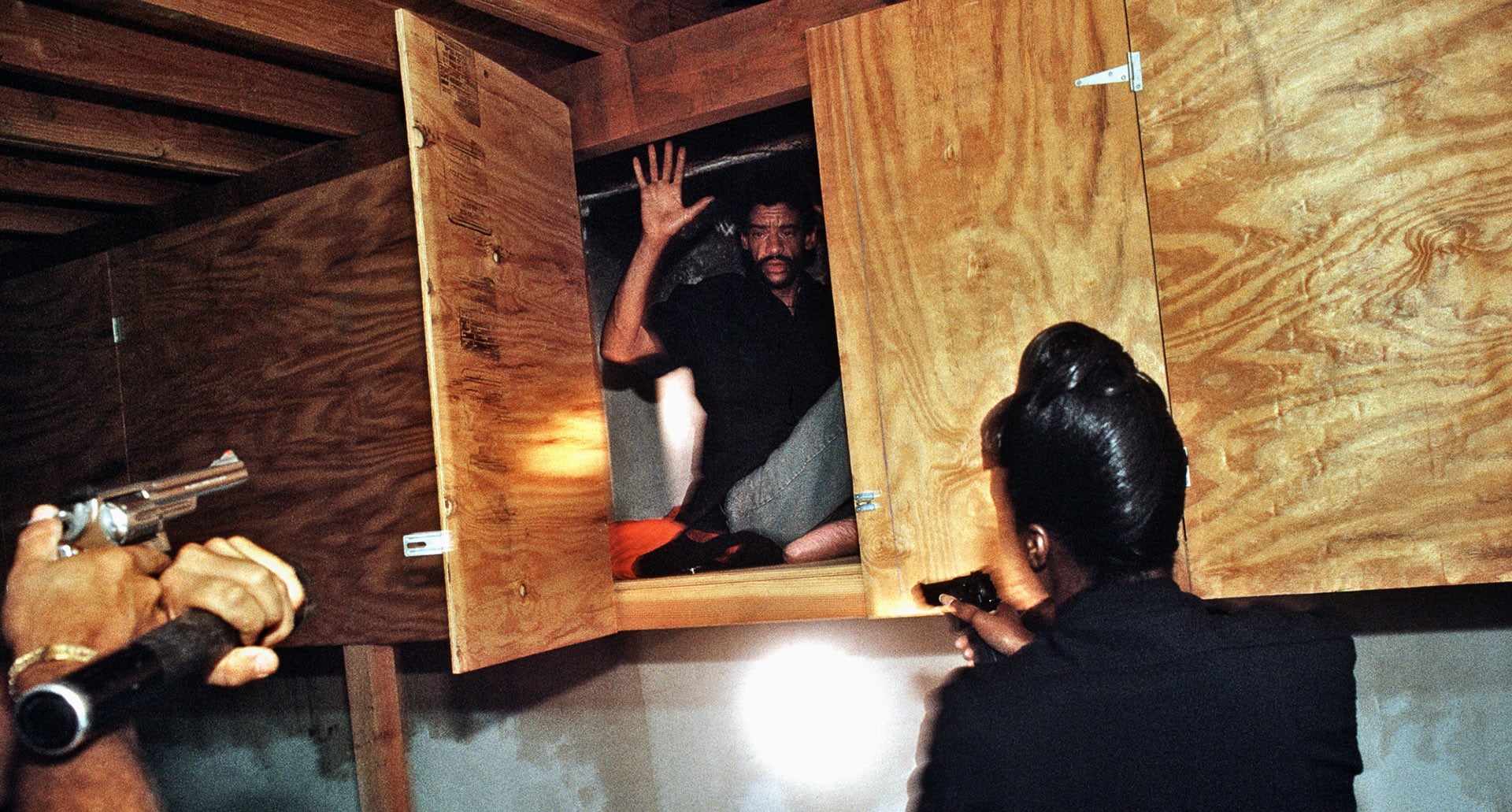
From 1978 to 1992, Police Chief Daryl Gates transformed the Los Angeles Police Department (LAPD) into a paramilitary force, introducing units that have come to define the extremist tactics of American policing. Violent, aggressive, and even unconstitutional in their scope, Gates created teams like SWAT (Special Weapons and Tactics), CRASH (Community Resources Against Street Hoodlums), and PDID (Public Disorder and Intelligence Division) to enact hard line campaigns against Black and Brown communities.
But Gates may be best known for the incident that would precipitate his downfall, the 1991 police assault on Rodney King, which was captured on video. After a nearly all-white male jury found four white police officers not guilty in 1992, the streets exploded with rage, sparking off the Los Angeles riots. Over six days of rage, the city burned, resulting in 63 dead, 1,283 injured, more than 12,000 arrested, and an estimated $1 billion in property damage. Only then did Gates finally resign.


In his place, Willie L. Williams became the first Black police commissioner in an ultimately unsuccessful attempt to refurbish the tarnished image of the LAPD. In a desperate bid to rebrand itself, the LAPD did the unthinkable in 1994: it partnered with The New York Times Magazine to give photographer Joseph Rodriguez and writer Richard Rayner unprecedented access to officers in the field in the hopes that they would craft an empathetic portrait of what the Times titled “A Kinder Gentler Cop.”
Inside LA’s Most Notorious Gang
More than 25 years after these photographs were made, Rodriguez returned to his archive to unearth an extensive look at never-before-seen works for the new online exhibition, organized by the Bronx Documentary Center in New York, and the book LAPD 1994. Rodriguez dove into the project right after wrapping up a two-year stint embedded in the local East LA gang scene for what would soon become East Side Stories: Gang Life in East LA (powerHouse Books, 1998).

“I had already driven with the Sheriff’s Gang Units in East LA so I had experienced dealing with cops but this one was an unusual opportunity so I jumped on it,” Rodriguez says. He accompanied street cops of their shifts, working around the clock over a couple of weeks with members of the CRASH unit, the Rampart Division (the notorious LAPD agency profiled in the 2001 film Training Day), and the 77th Street Division in South Central and Watts.
Adopting the wisdom of famed photojournalist Weegee, Rodriguez was in the mix, making photographs as close to the action as the situation would allow to create a poignant and painful portrait of the city just after it had reached its breaking point. Though Rodriguez could be empathetic with the police, his true allegiance lay with the people victimized by circumstance, crime, and the “justice” system.

who complains about the lack of police protection. © Joseph Rodríguez

Coming of age in Brooklyn decades before it was gentrified, Rodriguez saw firsthand the impact of poverty, domestic violence, and drug addiction on the community and families like his own. He was sent to Rikers Island twice as a juvenile before discovering photography and finding a means to free himself from the undertow. “I think about my mother, my stepfather who was a junkie, the shit we went through as kids,” he says. “The hardest thing to photograph was a young kid getting arrested but I had to do it.”
By Miss Rosen
Miss Rosen is a New York-based writer focusing on art, photography, and culture. Her work has been published in books, magazines, and websites including Time, Vogue, Artsy, Aperture, Dazed, and Vice, among others.


Joseph Rodriguez: LAPD 1994
Online at the Bronx Documentary Center of Photography
February 5–March 26, 2021
On view here.
Book published by The Artist Edition
$46.00
Available here.


